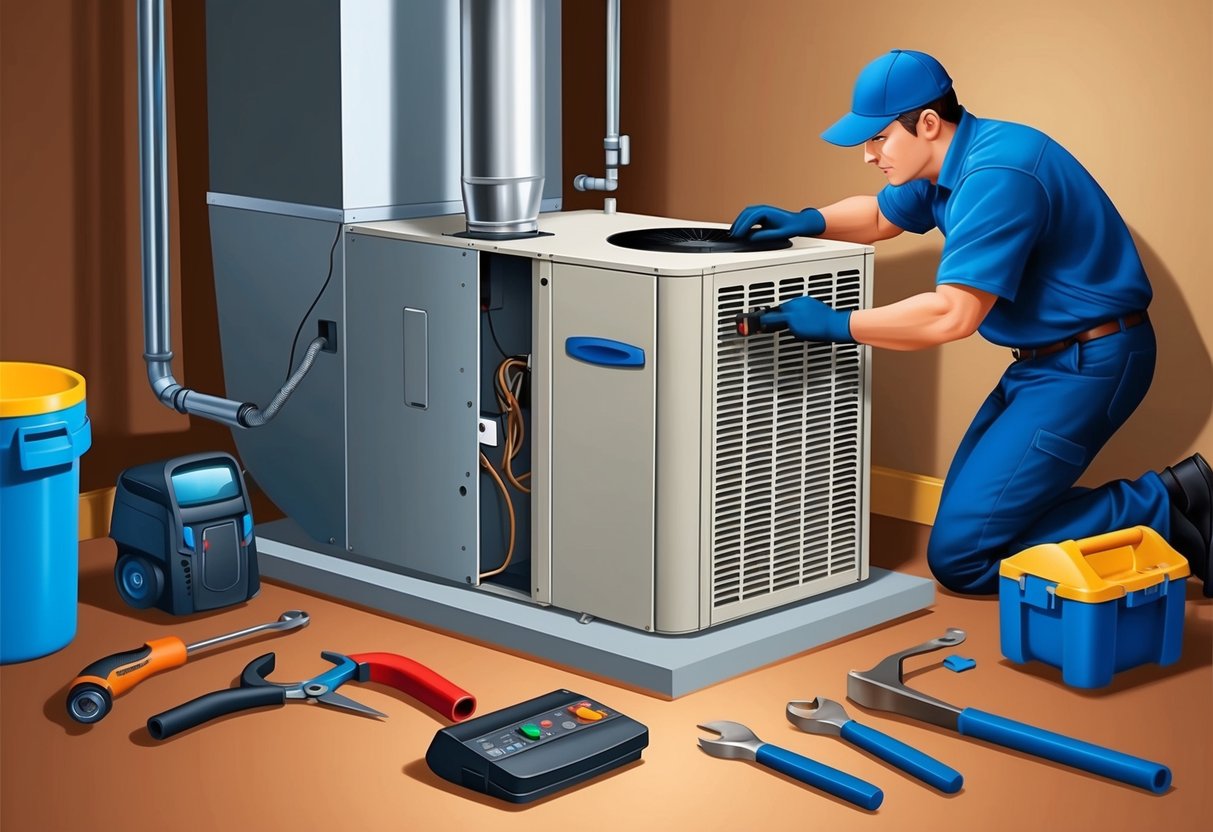
Homeowners often face unexpected spikes in energy bills or uneven temperatures throughout their homes. These are signs that point to HVAC issues impacting energy efficiency.
Common HVAC problems, such as dirty air filters, thermostat malfunctions, clogged ductwork, or low refrigerant, can hinder system performance and lead to increased energy consumption.
Knowing where to look first—like checking air filters for clogs, inspecting ductwork for leaks, and ensuring thermostats are working—can quickly address many inefficiencies. Routine preventive steps can also reduce the risk of breakdowns and help heating and cooling systems operate more efficiently.
More details on diagnosing and resolving these common HVAC problems can make a significant difference in overall home energy use.
Simple maintenance tasks not only extend the life of HVAC units but also support even heating and cooling throughout the house. By taking proactive measures, homeowners contribute to a more comfortable and energy-efficient living environment.
Understanding Your HVAC System
A well-functioning HVAC system relies on its individual parts working together efficiently. Homeowners can lower energy costs by understanding basic HVAC equipment and the role each component plays in overall performance.
Key Components of Heating and Cooling Systems
Every HVAC system includes several essential components designed to regulate indoor temperature and air quality. The most common parts are the furnace or heat pump, the air conditioner, an air handler, thermostats, ductwork, and various sensors.
The air handler moves air throughout the home, working with both heating and cooling phases. Thermostats control temperature settings, signaling the system to turn on or off based on indoor conditions.
Ductwork circulates conditioned air and must be leak-free to ensure efficiency. Systems may also include filters that trap dust and pollen, and condensate drains to manage moisture from air conditioning.
Split systems are a popular setup, separating the indoor and outdoor units to optimize heat transfer and energy use. Routine checks on these components can help homeowners detect issues early.
Types of HVAC Equipment
Homes use a range of HVAC equipment, each suited for different climates, budgets, and efficiency needs. The most common types are split systems, packaged systems, mini-split systems, and heat pumps.
Split systems pair an outdoor compressor and condenser with an indoor evaporator coil and air handler. Air conditioning systems often use this format for cooling in warm climates.
Packaged systems combine all components in a single outdoor cabinet, saving indoor space and often serving smaller homes. Heat pumps handle both heating and cooling, making them versatile in moderate climates.
Ductless mini-splits offer zoned temperature control without using ducts, which can improve efficiency in homes with unique layouts. The choice of equipment impacts comfort, installation cost, and long-term efficiency.
How HVAC Systems Affect Energy Bills
Heating and cooling account for a large portion of residential energy costs. An HVAC system’s efficiency depends on the age, maintenance, and configuration of the equipment installed.
Routine maintenance, such as changing air filters and cleaning air handler units, helps prevent airflow restrictions and reduces energy waste. Problems like dirty filters or leaking ducts can significantly increase energy bills if left unchecked.
Improper thermostat settings may also force the system to operate longer than necessary, raising costs. Selecting energy-efficient models and ensuring professional installation are important for optimal performance.
Upgrading insulation and sealing ducts further reduces the burden on HVAC equipment, helping homeowners moderate energy costs.
Identifying Common HVAC Problems
Homeowners often face issues with their HVAC systems that reduce energy efficiency, comfort, and system lifespan. Key symptoms include sounds from the system, irregular temperatures, airflow changes, and unexpected odors.
Recognizing Warning Signs and Unusual Noises
Unusual noises are common HVAC problems that should not be ignored. Rattling, banging, or buzzing may indicate loose parts or debris in the ductwork.
Squealing can point to a worn belt or malfunctioning motor, while banging sounds from the furnace or AC sometimes signal an ignition or compressor problem. Beyond noise, watch for frequent cycling, which can stem from a faulty thermostat or electrical issue.
If an air conditioner or heater suddenly stops working, check for tripped breakers and blown fuses. According to this guide to frequent HVAC problems, simple fixes like replacing a dirty filter or correcting a thermostat setting can prevent further damage.
Detecting Uneven Temperatures and Airflow Issues
Uneven temperatures between rooms often signal airflow problems or duct blockages. This can make some rooms uncomfortable and raise energy bills as the system struggles to compensate.
Steps to assess the issue include checking vents and registers for obstructions, as well as examining filters for dirt buildup. Clogged or dirty ductwork and filters reduce airflow and efficiency.
A malfunctioning thermostat or leaky ductwork may worsen these problems. As explained by experts on airflow issues, resolving these underlying causes restores efficiency and comfort.
Regularly replacing air filters and scheduling duct inspections help prevent recurrence.
Spotting Refrigerant Leaks and Odors
Refrigerant leaks are a serious AC problem that impacts cooling performance and may harm the environment. Low refrigerant levels cause the unit to run longer and leave rooms feeling less cool.
Tell-tale signs include hissing noises, ice buildup on coils, and warm air blowing from vents when the AC is on. Odors may also point to system faults.
A musty smell suggests mold in the ductwork, while burning odors may indicate overheating wiring or components. If strange smells persist, prompt inspection and repair are necessary.
Early detection of refrigerant leaks and odors reduces repair costs and supports better home air quality.